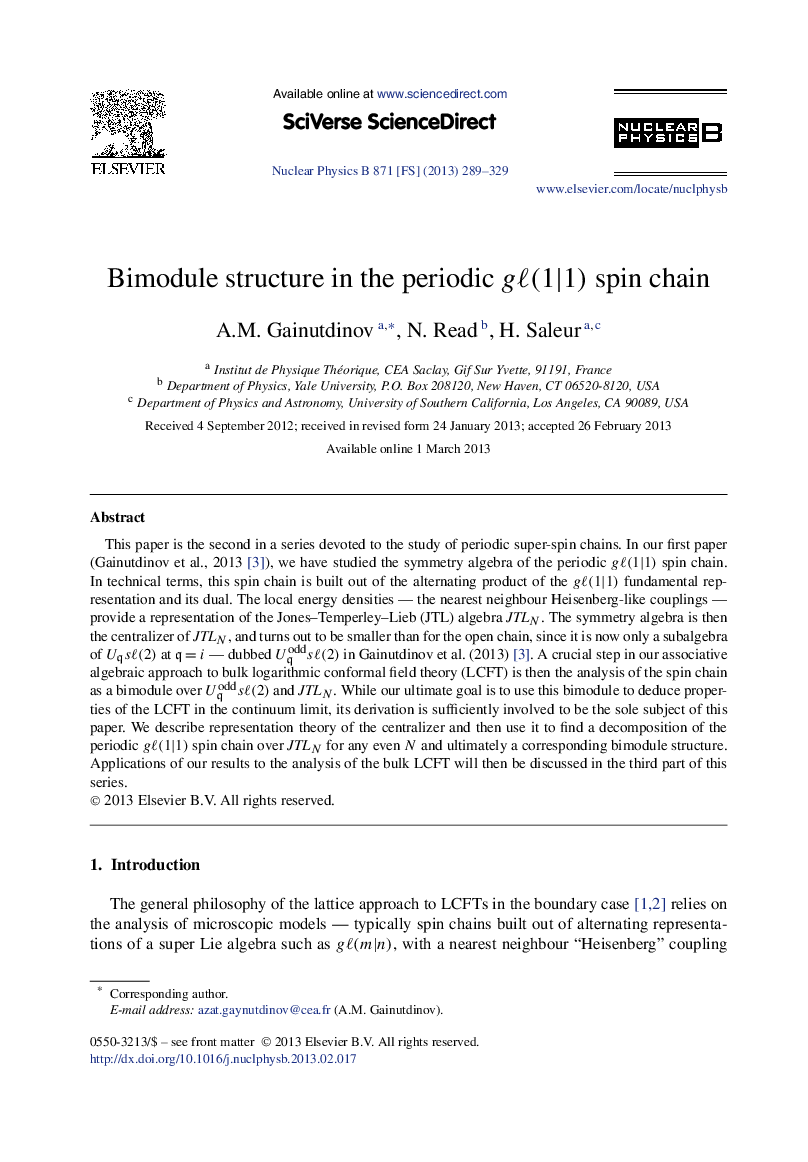| Article ID | Journal | Published Year | Pages | File Type |
|---|---|---|---|---|
| 1842328 | Nuclear Physics B | 2013 | 41 Pages |
Abstract
This paper is the second in a series devoted to the study of periodic super-spin chains. In our first paper (Gainutdinov et al., 2013 [3]), we have studied the symmetry algebra of the periodic gâ(1|1) spin chain. In technical terms, this spin chain is built out of the alternating product of the gâ(1|1) fundamental representation and its dual. The local energy densities - the nearest neighbour Heisenberg-like couplings - provide a representation of the Jones-Temperley-Lieb (JTL) algebra JTLN. The symmetry algebra is then the centralizer of JTLN, and turns out to be smaller than for the open chain, since it is now only a subalgebra of Uqsâ(2) at q=i - dubbed Uqoddsâ(2) in Gainutdinov et al. (2013) [3]. A crucial step in our associative algebraic approach to bulk logarithmic conformal field theory (LCFT) is then the analysis of the spin chain as a bimodule over Uqoddsâ(2) and JTLN. While our ultimate goal is to use this bimodule to deduce properties of the LCFT in the continuum limit, its derivation is sufficiently involved to be the sole subject of this paper. We describe representation theory of the centralizer and then use it to find a decomposition of the periodic gâ(1|1) spin chain over JTLN for any even N and ultimately a corresponding bimodule structure. Applications of our results to the analysis of the bulk LCFT will then be discussed in the third part of this series.
Related Topics
Physical Sciences and Engineering
Mathematics
Mathematical Physics
Authors
A.M. Gainutdinov, N. Read, H. Saleur,
